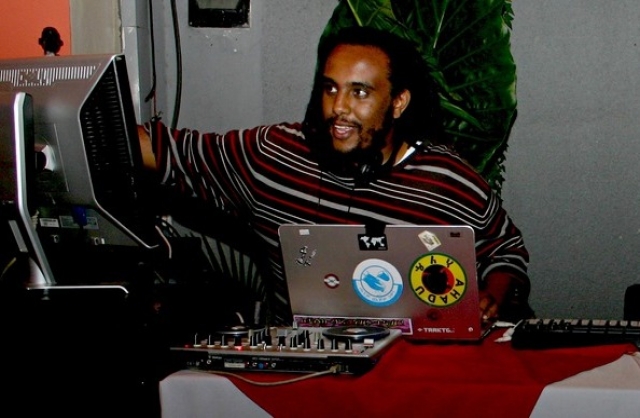 In Ethiopia, a forward-thinking network of artists are uniting traditional folk and chopped-up beats with whatever equipment they can get their hands on. (Photo of Endeguena Mulu by Pete Kowalczyk)
In Ethiopia, a forward-thinking network of artists are uniting traditional folk and chopped-up beats with whatever equipment they can get their hands on. (Photo of Endeguena Mulu by Pete Kowalczyk)
By Huw Oliver
Tuesday 3 February 2015
In downtown Addis Ababa, most nightclubs have a disappointingly generic, western playlist. But on the outskirts of the Ethiopian capital, you’ll discover a throng of exciting local producers throwing their own impromptu parties and packing out muggy backstreet bars. Meshing street musician samples and traditional folk sounds with UKG and Burial-inspired beats, they call the movement Ethiopiyawi electronic.
Music equipment is notoriously costly and difficult to get hold of in this part of the world but, recently, modern software like Ableton, along with MIDI controllers and hand-me-down drum machines have become more readily accessible. As a result, scene linchpins Endeguena Mulu (AKA Ethiopian Records) and Mikael Seifu (AKA Mic Tek) are offering their studios and equipment for use to local kids. They encourage them to absorb what they hear around them, while at the same time drawing upon the electronic patrimony of the UK and US. And rather than elevating the EDM sound, they prefer the twitching rhythms of Kode9 and Flying Lotus.
Often consisting of little more than a lyre or lute sample, underpinned by a chopped-up house or garage beat and overlaid with the looped chants of azmaris (folk singer-musicians), the Ethiopiyawi electronic style takes its cues from Ethio-jazz legend Mulatu Astatke and South African futurist collective Fantasma in the way that it smoothly blends traditional and modern styles. In a country with more than 80 ethnic groups and 40 native instruments spanning horns, percussion and strings, Ethiopian folk music is inherently diverse.
Read more at The Guardian »
—
Join the conversation on Twitter and Facebook.

























